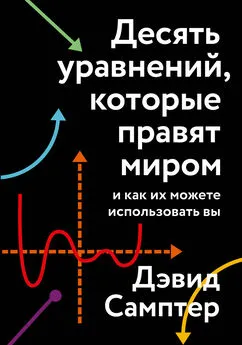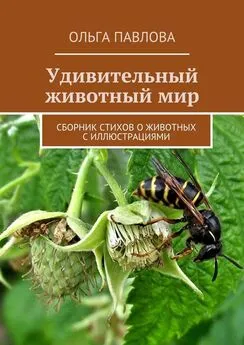Дэвид Барри - Супернавигаторы. О чудесах навигации в животном мире
- Название:Супернавигаторы. О чудесах навигации в животном мире
- Автор:
- Жанр:
- Издательство:КоЛибри, Азбука-Аттикус
- Год:2020
- Город:Москва
- ISBN:978-5-389-12411-0
- Рейтинг:
- Избранное:Добавить в избранное
-
Отзывы:
-
Ваша оценка:
Дэвид Барри - Супернавигаторы. О чудесах навигации в животном мире краткое содержание
А что же человек?.. Некоторые коренные народы до сих пор применяют древние методы навигации, позволяющие им совершать долгие и трудные путешествия на суше и на море, не используя даже карт и компасов — не говоря уже о GPS. Но мы по большей части целиком полагаемся на электронику. Мы можем определить свое местоположение одним нажатием кнопки, но на самом деле понятия не имеем, где мы находимся. Поворачиваясь спиной к окружающему нас миру, мы рискуем не только своим физическим и духовным благополучием, но, возможно, и своей безопасностью…
Эта книга показывает чудеса навигации, на которые способны животные, в совершенно новом свете, и будет интересна не только тем, кто увлекается животным миром, но и питает в себе страсть учиться, исследовать неизведанное и самосовершенствоваться.
Супернавигаторы. О чудесах навигации в животном мире - читать онлайн бесплатно ознакомительный отрывок
Интервал:
Закладка:
406
Putman, N. F., Verley, P., Endres, C. S., & Lohmann, K. J. (2015). ‘Magnetic navigation behavior and the oceanic ecology of young loggerhead sea turtles’, Journal of Experimental Biology, 218 (7). P. 1044–1050.
407
Сводное описание этих работ приведено в Lohmann, K. J., Putman, N. F., & Lohmann, C. M. (2012). ‘The magnetic map of hatchling loggerhead sea turtles’, Current Opinion in Neurobiology, 22 (2). P. 336–342.
408
Putman, N. F., Endres, C. S., Lohmann, C. M., & Lohmann, K. J. (2011). ‘Longitude perception and bicoordinate magnetic maps in sea turtles’, Current Biology, 21 (6). P. 463–466.
409
Putman, N. F., & Lohmann, K. J. (2008). ‘Compatibility of magnetic imprinting and secular variation’, Current Biology, 18 (14), R 596–R 597.
410
Brothers, J. R., & Lohmann, K. J. (2015). ‘Evidence for geomagnetic imprinting and magnetic navigation in the natal homing of sea turtles’, Current Biology, 25 (3). P. 392–396.
411
Brothers, J. R., & Lohmann, K. J. (2018). ‘Evidence that Magnetic Navigation and Geomagnetic Imprinting Shape Spatial Genetic Variation in Sea Turtles’, Current Biology, 28 (8). P. 1325–1329.
412
Endres, C. S., and Lohmann, K. J. (2013). ‘Detection of coastal mud odors by loggerhead sea turtles: a possible mechanism for sensing nearby land’, Marine Biology, 160 (11). P. 2951–2956.
413
Endres, C. S., Putman, N. F., Ernst, D. A., Kurth, J. A., Lohmann, C. M., & Lohmann, K. J. (2016). ‘Multi-modal homing in sea turtles: modeling dual use of geomagnetic and chemical cues in island-finding’, Frontiers in Behavioral Neuroscience, 10. P. 19.
414
Lohmann, K. J., Lohmann, C. M., & Endres, C. S. (2008). ‘The sensory ecology of ocean navigation’, Journal of Experimental Biology, 211 (11). P. 1719–1728.
415
То есть омарам.
416
Английское название SQUID — аббревиатура от слов Superconducting Quantum Interference Device , совпадающая со словом squid , то есть «кальмар».
417
Lohmann, K., Pentcheff, N., Nevitt, G., Stetten, G., Zimmer-Faust, R., Jarrard, H., & Boles, L. C. (1995). ‘Magnetic orientation of spiny lobsters in the ocean: experiments with undersea coil systems’, Journal of Experimental Biology, 198 (10). P. 2041–2048.
418
Boles, L. C., & Lohmann, K. J. (2003). ‘True navigation and magnetic maps in spiny lobsters’, Nature, 421 (6918). P. 60–63.
419
Baker, R. R. (1980). ‘Goal orientation by blindfolded humans after long-distance displacement: Possible involvement of a magnetic sense’, Science, 210 (4469). P. 555–557.
420
Fildes, B. N., O’Loughlin, B. J., Bradshaw, J. L., & Ewens, W. J. (1984). ‘Human orientation with restricted sensory information: no evidence for magnetic sensitivity’, Perception, 13 (3). P. 229–248.
421
В июле 2018 года.
422
Речной, или обыкновенный, угорь ( Anguilla anguilla ).
423
Naisbett-Jones, L. C., Putman, N. F., Stephenson, J. F., Ladak, S., & Young, K. A. (2017). ‘A magnetic map leads juvenile European eels to the Gulf Stream’, Current Biology, 27 (8). P. 1236–1240.
424
Durif, C. M., Bonhommeau, S., Briand, C., Browman, H. I., Castonguay, M., Daverat, F., … & Moore, A. (2017). ‘Whether European eel leptocephali use the earth’s magnetic field to guide their migration remains an open question’, Current Biology, 27 (18), R 998–R 1000.
425
Kobayashi, A., & Kirschvink, J. L. (1995). ‘Magnetoreception and electromagnetic field effects: sensory perception of the geomagnetic field in animals and humans’.
426
Taylor, B. K., Johnsen, S., & Lohmann, K. J. (2017). ‘Detection of magnetic field properties using distributed sensing: a computational neuroscience approach’, Bioinspiration & Biomimetics, 12 (3), 036013.
427
Gould & Gould, Nature’s Compass, op. cit. P. 111–114.
428
Anderson, J. M., Clegg, T. M., Véras, L. V., & Holland, K. N. (2017). ‘Insight into shark magnetic field perception from empirical observations’, Scientific Reports, 7 (1). P. 11042.
429
Fleissner, G., Stahl, B., Thalau, P., Falkenberg, G., & Fleissner, G. (2007). ‘A novel concept of Fe-mineral-based magnetoreception: histological and physicochemical data from the upper beak of homing pigeons’, Naturwissenschaften, 94 (8). P. 631–642.
430
Mora, C. V., Davison, M., Wild, J. M., & Walker, M. M. (2004). ‘Magnetoreception and its trigeminal mediation in the homing pigeon’, Nature, 432 (7016). P. 508.
431
Treiber, C. D., Salzer, M. C., Riegler, J., Edelman, N., Sugar, C., Breuss, M., … & Shaw, J. (2012). ‘Clusters of iron-rich cells in the upper beak of pigeons are macrophages not magnetosensitive neurons’, Nature, 484 (7394). P. 367.
432
Zapka, M., Heyers, D., Hein, C. M., Engels, S., Schneider, N. L., Hans, J., … & Mouritsen, H. (2009). ‘Visual but not trigeminal mediation of magnetic compass information in a migratory bird’, Nature, 461 (7268). P. 1274.
433
Gagliardo, A., Ioalè, P., Savini, M., & Wild, J. M. (2006). ‘Having the nerve to home: trigeminal magnetoreceptor versus olfactory mediation of homing in pigeons’, Journal of Experimental Biology, 209 (15). P. 2888–2892.
434
Kishkinev, D., Chernetsov, N., Heyers, D., & Mouritsen, H. (2013). ‘Migratory reed warblers need intact trigeminal nerves to correct for a 1,000 km eastward displacement’, PLoS One, 8 (6), e65847.
435
Holland, R. A., & Helm, B. (2013). ‘A strong magnetic pulse affects the precision of departure direction of naturally migrating adult but not juvenile birds’, Journal of The Royal Society Interface, 10 (81), 20121047.
436
Подробный обзор этой темы см.: Mouritsen, H. (2015). ‘Magnetoreception in birds and its use for long-distance migration’, Sturkie’s Avian Physiology. P. 113–133.
437
Wu, L. Q., & Dickman, J. D. (2012). ‘Neural correlates of a magnetic sense’, Science, 336 (6084). P. 1054–1057.
438
Schulten, K., Swenberg, C. E., & Weller, A. (1978). ‘A biomagnetic sensory mechanism based on magnetic field modulated coherent electron spin motion’, Zeitschrift für Physikalische Chemie, 111 (1). P. 1–5.
439
Подробный обзор данных по радикальным парам см.: Hore, P. J., and Henrik Mouritsen (2016). ‘The radical-pair mechanism of magnetoreception’, Annual Review of Biophysics, 45. P. 299–344.
440
Zapka, M., Heyers, D., Hein, C. M., Engels, S., Schneider, N. L., Hans, J., … & Mouritsen, H. (2009). ‘Visual but not trigeminal mediation of magnetic compass information in a migratory bird’, Nature, 461 (7268). P. 1274.
441
Gegear, R. J., Casselman, A., Waddell, S., & Reppert, S. M. (2008). ‘Cryptochrome mediates light-dependent magnetosensitivity in Drosophila’, Nature, 454 (7207). P. 1014; Gegear, R. J., Foley, L. E., Casselman, A., & Reppert, S. M. (2010). ‘Animal cryptochromes mediate magnetoreception by an unconventional photochemical mechanism’, Nature, 463 (7282). P. 804.
442
Bazalova, O., Kvicalova, M., Valkova, T., Slaby, P., Bartos, P., Netusil, R., … & Damulewicz, M. (2016). ‘Cryptochrome 2 mediates directional magnetoreception in cockroaches’, Proceedings of the National Academy of Sciences, 113 (6). P. 1660–1665.
443
В большинстве случаев, но не всегда: например, солнечная электроэнергетика основана на другом принципе.
444
Стефано Лоренцини (р. ок. 1652).
445
Jungerman, R. L., & Rosenblum, B. (1980). ‘Magnetic induction for the sensing of magnetic fields by animals — an analysis’, Journal of Theoretical Biology, 87 (1). P. 25–32.
446
Lauwers, M., Pichler, P., Edelman, N. B., Resch, G. P., Ushakova, L., Salzer, M. C., … & Keays, D. A. (2013). ‘An iron-rich organelle in the cuticular plate of avian hair cells’, Current Biology, 23 (10). P. 924–929.
447
Nordmann, G. C., Hochstoeger, T., & Keays, D. A. (2017). ‘Magnetoreception — a sense without a receptor’, PLoS Biology, 15 (10), e2003234.
448
Речь идет о нескольких видах тунца — обыкновенном, или синем, тунце ( Thunnus thynnus ), тихоокеанском голубом тунце ( Thunnus orientalis ) и австралийском тунце ( Thunnus maccoyii ).
449
Tawa, A., Ishihara, T., Uematsu, Y., Ono, T., & Ohshimo, S. (2017). ‘Evidence of westward transoceanic migration of Pacific bluefin tuna in the Sea of Japan based on stable isotope analysis’, Marine Biology, 164 (4). P. 94; Block, B. A., et al. (2005). ‘Electronic tagging and population structure of Atlantic bluefin tuna’, Nature 434. P. 1121–1127.
450
Willis, J., Phillips, J., Muheim, R., Diego-Rasilla, F. J., & Hobday, A. J. (2009). ‘Spike dives of juvenile southern bluefin tuna (Thunnus maccoyii): a navigational role?’, Behavioral Ecology and Sociobiology, 64 (1). P. 57.
451
Walker, M. M. (1984). ‘Learned magnetic field discrimination in yellowfin tuna, Thunnus albacares’, Journal of Comparative Physiology A: Neuroethology, Sensory, Neural, and Behavioral Physiology, 155 (5). P. 673–679.
452
De Waal, F., Are We Smart Enough to Know How Smart Animals Are? (Granta, 2016). P. 55.
453
Цит по изд.: Де Вааль Ф. Достаточно ли мы умны, чтобы судить об уме животных? / Пер. Н. Майсуряна. М.: Альпина нон-фикшен, 2017.
454
Tolman, E. C. (1948). ‘Cognitive maps in rats and men’, Psychological Review, 55 (4). P. 189.
455
Цит. по: Толмен Э. Когнитивные карты у крыс и у человека // История психологии (10–30-е гг. Период открытого кризиса): Тексты. М.: Изд-во Моск. ун-та. 1992. С. 124–143.
456
Кёлер Вольфганг (1887–1967) — один из основателей гештальтпсихологии. С 1913 по 1920 г. работал директором станции исследования человекообразных обезьян Прусской академии наук на о. Тенерифе.
Читать дальшеИнтервал:
Закладка:
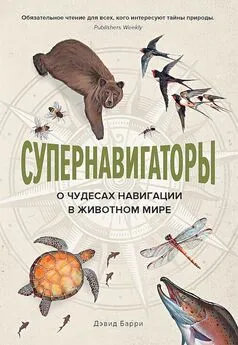

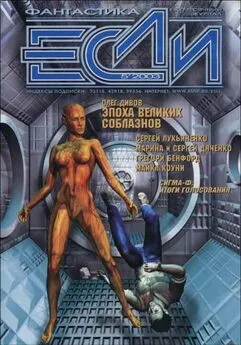

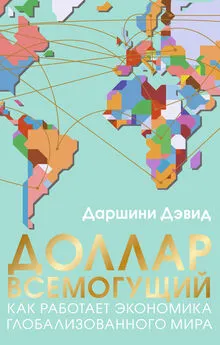

![Дэвид Барри - Супернавигаторы [О чудесах навигации в животном мире] [litres]](/books/1064404/devid-barri-supernavigatory-o-chudesah-navigacii-v.webp)
![Барри Пэйн - Новый Гулливер [Затерянные миры. Том XXIV]](/books/1075767/barri-pejn-novyj-gulliver-zateryannye-miry-tom-xx.webp)

